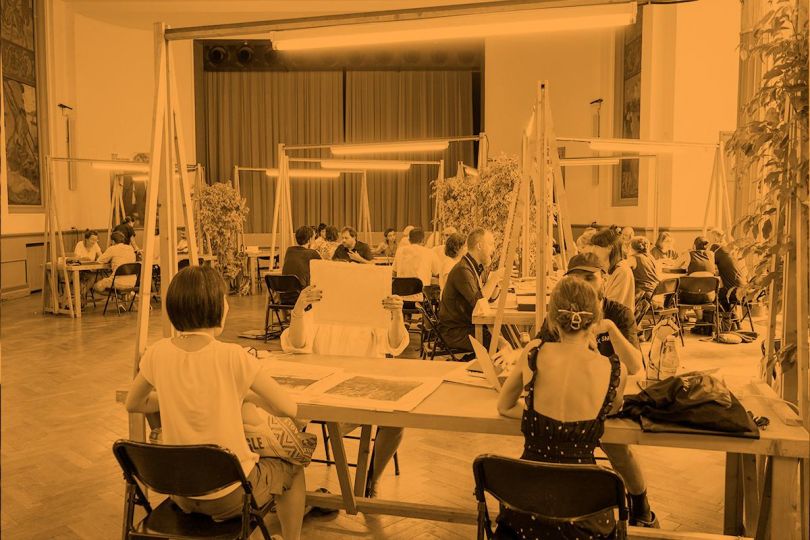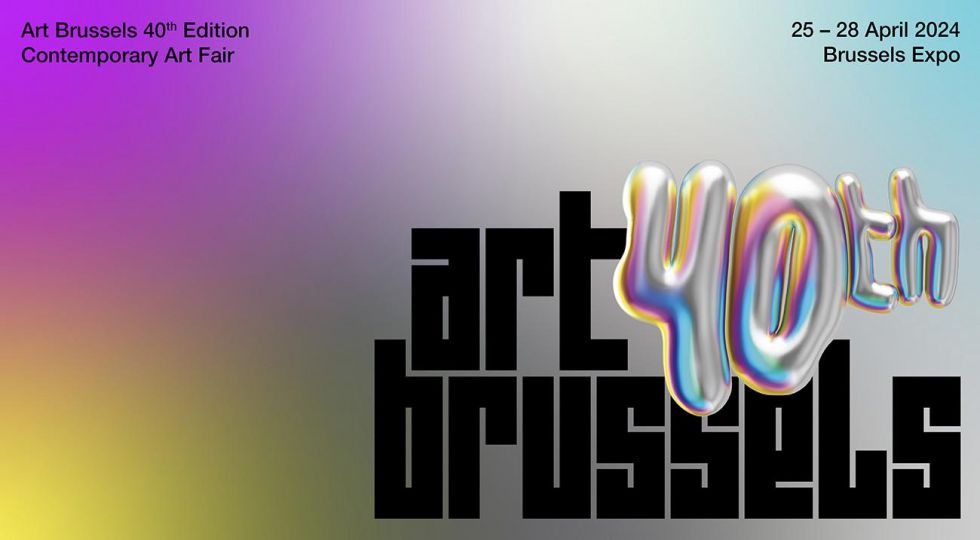Paola Sammartano, our Italian correspondent visited the Rencontres d’Arles. She gives us her feeling!
Even in the heart of the summer, the Rencontres d’Arles are an opportunity to enjoy the charm of one of the most famous photography festivals as well as the history and monuments of this French city on the Rhône River. In addition to its stunning Roman monuments, the festival transforms Arles into an (even more) enchanting backdrop for exhibitions and an inspiring space to explore, from ancient churches to industrial buildings.
One possible visiting approach to the Rencontres could be to visit both the shows and the exhibition venues of the festival, in order to discover the cross-references between the images and the locations that contain them allowing photographs to come alive in distinct ways. For instance, you can follow a path that touches on ancient churches. Others, however, can be pointed out, for instance along the thread of museums or cutting-edge sites, such as Luma Arles, the creative campus designed by Frank O. Gehry on a former industrial site, which hosts the exhibitions on Diane Arbus and Gregory Crewsdon, among others.
You can start at the medieval Cloître Saint-Trophime, a Unesco World Heritage site, next to the cathedral (which features an incredible Romanesque portal). Through its Romanesque and Gothic arcades you enter the exhibition La Pointe Courte, From Photographs to Film by Agnès Varda, who photographed the life of the working-class neighborhood at La Pointe Courte, the setting, years later, for her first film (1954). According to curator Carole Sandrine: “When we compare the 800-odd photos she took in Sète with the painstaking selection she undertook in 1953 to prepare her film, we begin to see her vision. These are not film stills of the set, but images antedating the idea of the film”. The Cloître also hosts Insolare, the winning project of the 2023 BMW Art Makers Program, which enables an artist/curator duo to create an experimental work in contemporary photography and its spatial installation. Eva Nielsen and Marianne Derrien, take on optical and hydrogeological phenomena and combine them with exposure to light (insolation), a technique used in screen printing. The project explores a vision of the rural, industrial world and the seductive yet hostile space of the saline: by overlaying silk screen images and paintings, it presents a fragmented vision of these areas.
The Palais de l’Archevêché, which was the seat of the Church of Arles in the Middle Ages, is the venue for Assemblages by Saul Leiter. With its monumental staircase, it forms interesting references to the photographs, which, according to curator Anne Morin, are “tiny fragments of an unfinished world. Little fragments of images juxtaposed and conjoined forming vast, ever-expanding fields. Painter and photographer, he “photographed that which obstructs, hides, encloses, and thus reveals new depths of reality. Everything is a matter of balance, exactitude, and humility in the works of this man, who nonetheless accorded great importance to imperfection”. The exhibition brings together a selection of photographs, drawings, and paintings, most unpublished.
On the opposite side of the Place de la République, the Église Sainte-Anne, built in the austere Late Gothic style of the 17th century, is home to (and in dialogue with) Søsterskap, an overview of contemporary Nordic photography, from the post-war period to the present day. Developed by 18 photographers, it’s a reflection on the relationship the welfare state has maintained with a certain idea of sisterhood (Søsterskap). Their works range from documentary to conceptual and also consider other aspects of the welfare state, based on exclusion and endless economic growth. The Finnish artist Emma Sarpaniemi created the 2023 festival poster with her self-portrait.
Entering the Église des Trinitaires, one senses a correspondence between its Late Gothic style (with its eclectic 19th-century facade) and the works by Zofia Kulik, in Splendor of the Artisan. Kulik, who studied sculpture, conveys a strong plasticity into her photographic compositions. “Manipulation of the photographic medium is a key point for her, who studies and experiments with the media (whichever it is) in all its possibilities. So doing she creates new identities and symbols”, curator Karolina Ziebinska-Lewandowska says. “I’m a talented organizer of compound visual structures”, Kulik adds. Working on thousands of motifs–models in symbolic poses, she organises visual stories in large photomontages realised in her darkroom, rich in cultural references and reminiscent of (b&w) stained glass.
Aam Aastha (“common devotions”) by Charles Fréger, presented by Actes Sud, is set in the Chapelle Saint-Martin du Méjan (rebuilt in 1635). The project, produced in India (2019-2022), is a part of Fréger’s series on masquerades around the world, which began with Wilder Mann. In India, he studied and shot a pantheon of faces of divinities, expressed in sacred performances. Portraying the gods implies redistributing assigned social roles: Aam Aastha represents and uncovers the masked game of performance, between reinforcing power and subversion.
The Rencontres d’Arles are also a platform for emerging talents, for instance with the Discovery Award Louis Roederer Foundation at the Église des Frères Prêcheurs. The ethereal atmosphere of this Gothic church, built by the Dominicains, provides a unique setting for the exhibitions. This year, ten shortlisted projects are featured in a single show curated by Tanvi Mishra. The artists are bound by a notion of shifting perception and photography’s potential to embody meaning beyond what it apparently displays. The winner of the 2023 edition of the Award is Isadora Romero (Ecuador) presented by Magnum Foundation, with the project Fume, Root, Seed, telling about agrobiodiversity and referring to the fact that her great parents were seed guardians; the winner of the Public Award is Soumya Sankar Bose (India), presented by Experimenter, with A Discreet Exit through the Darkness.
Then you can visit the Chapelle du Museon Arlaten (or Chapelle des Jésuites, 17th century), where Light of Saints. A Photographic Pilgrimage presents a photographic history of the pilgrimage to Saintes-Maries-de-la-Mer, during which Gitans, Manouches and travellers honour Saint Sara. Photographers have been capturing this event since the 19th century. The next stops are the Église Saint-Blaise, with Cosmovisión by Garush Melkonyan and the Chapelle de la Charité with Opus Incertum by Daniel Wagener, winner of the Lët’z Arles – Luxembourg Photography Award. At the Couvent Saint-Césaire, Habeas Corpus is on: curated by Benoit Baume and Valentin Ducros, it displays various futuristic visions rooted in reality, but interpreted through technologies such as motion capture, real-time 3D and body scanning.
The Benedictine Abbey of Montmajour, with its almost eight centuries of history, offers a stroll through history and current events thanks to the exhibition 50 Years Through the Eyes of Libération. Same location for Just Because You Pressed the Shutter? by Tan Chui Mui, winner of the 2022 Jimei × Arles Discovery Award, with a project that questions photography and poses the hypothesis that today the art of photography is the art of image making, on the edge between technology and creativity.
Paola Sammartano
Arles 2023 – Les Rencontres de la Photographie
from July 3 to September 24, 2023
www.rencontres-arles.com
















